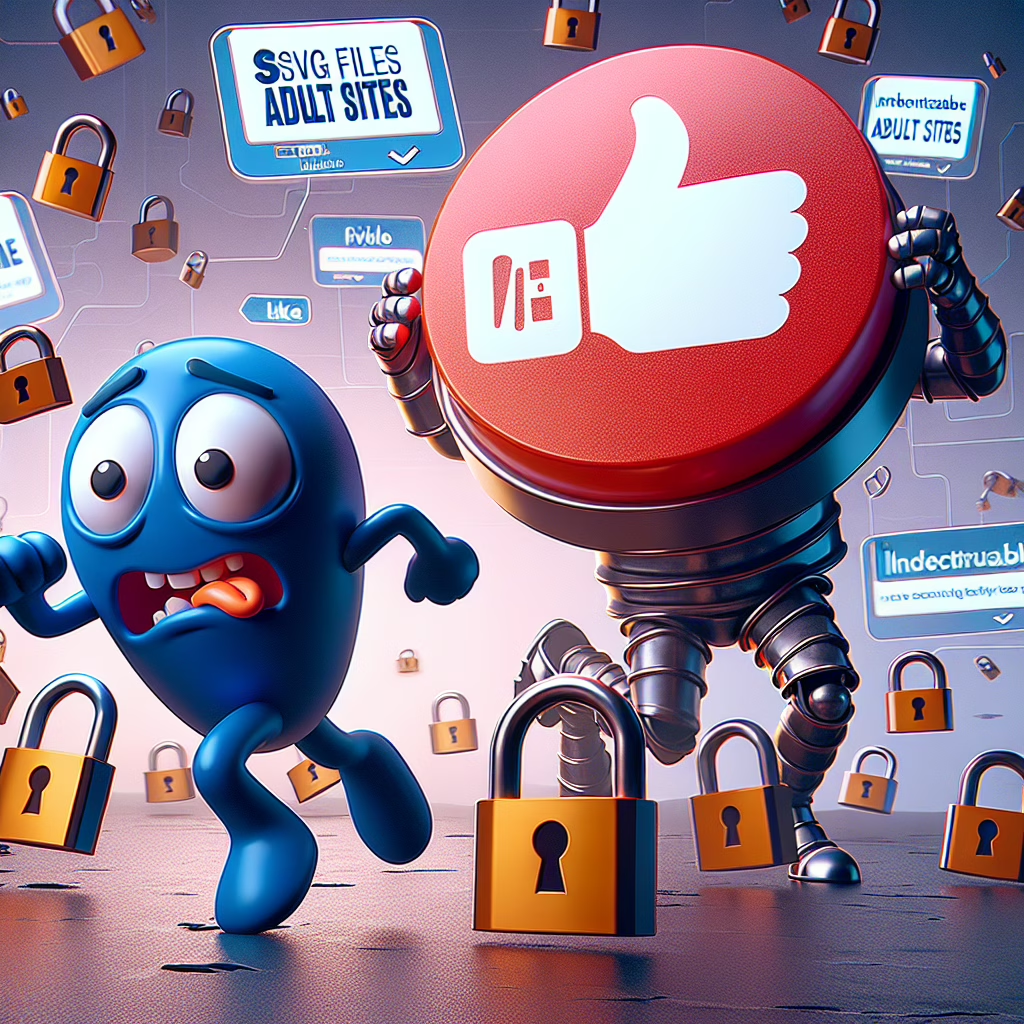In the wild, wild web of 2025, where adult sites are using malicious SVG files to rake in likes on Facebook, we find ourselves at a curious crossroads of internet behavior and cybersecurity. It’s a tale as old as time—or at least as old as the last TikTok trend—where the quest for social validation leads us down some rather treacherous paths.
What Are These SVG Files Anyway?
Scalable Vector Graphics, or SVGs, are like the fancy Swiss Army knives of the web design world. They can be scaled to any size without losing quality, making them perfect for everything from logos to animations. But in the hands of some less-than-reputable website operators, these nifty files can also become tools of deception.
The Dark Side of SVG Files: Potential Risks
Now, imagine this: You’re scrolling through your Facebook feed, and you see a post that catches your eye—perhaps it’s a meme about cats or an oddly mesmerizing animation. But wait! What if that seemingly innocent post is actually harboring a malicious SVG file designed to siphon off your personal data or inflate engagement numbers? That’s right! Adult sites have been known to take advantage of this technology, turning them into deceptive engagement tactics.
How Do Adult Sites Use Malicious SVG Files?
The process is simpler than you might think (and not nearly as fun as binge-watching your favorite series). These sites create enticing posts using SVG files that seem harmless. Once a user clicks on these posts, they inadvertently trigger scripts that generate likes on Facebook—like magic, but the kind that leaves you with a bad taste in your mouth rather than a rabbit in a hat.
This sneaky tactic allows these sites to boost their visibility without ever having to earn those likes authentically. It’s akin to throwing a surprise party for yourself and then pretending it was all spontaneous when, in reality, you just hired a marching band to play outside your window!
The Risks of Clicking on Malicious SVG Files
While it may sound like something out of a hacker movie, the risks are quite real. Clicking on these seemingly innocent SVG files can expose you to various threats. Not only do they inflate engagement statistics for those adult sites, but they can also lead unsuspecting users down a rabbit hole of privacy violations and data theft.
So, what’s a savvy internet user to do? The answer lies in vigilance! Just because something glitters on the internet doesn’t mean it’s gold—or safe! Ensure that you’re only clicking links from sources you trust. And remember: if it seems too good to be true (like an adult site promising “100% free access”), it probably is!
Protect Yourself from Malicious SVG Files
To keep those pesky SVGs at bay and ensure your online safety, consider these tips:
- Keep Your Software Updated: Regular updates can patch vulnerabilities that malicious actors exploit.
- Use Ad Blockers: These tools can help prevent unwanted ads—including those sneaky posts from dubious sites—from showing up in your feed.
- Be Skeptical: If something seems off about a post or link, trust your instincts. A little skepticism goes a long way!
- Investigate Before You Click: Search the source of unusual links or suspicious posts to verify their legitimacy.
By taking proactive measures, you can surf the waves of the internet with confidence instead of fear!
A Final Word on Online Safety
The digital world is constantly evolving. While adult sites using malicious SVG files may seem like just another bizarre chapter in this saga, it serves as a reminder of how important online safety has become in 2025. Remember to stay informed and cautious while navigating this vast sea of information (and misinformation).
If you’ve had any experiences with dubious links or funny business online, share your stories in the comments below! Let’s learn from each other and navigate this wild web together!
Special thanks to Ars Technica for shedding light on this issue. Your insights make us all safer!

